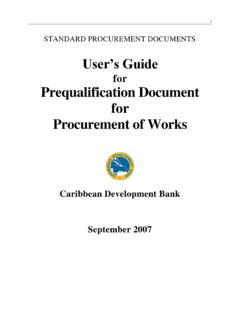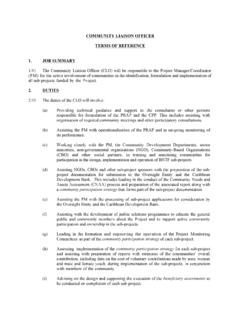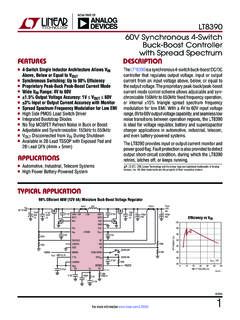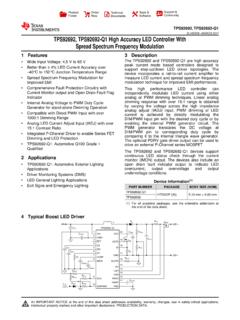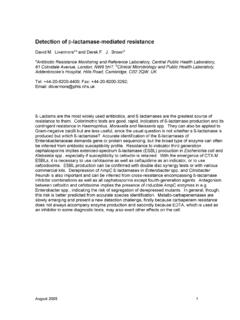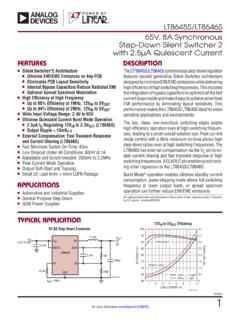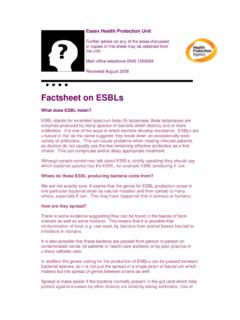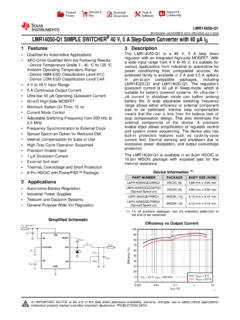Transcription of PUBLIC PARTICIPATION IN SOLID WASTE …
1 PUBLIC PARTICIPATION IN SOLID WASTE management IN. SMALL ISLAND DEVELOPING STATES. A Research Paper by Clairvair O. Squires October 2006. ======================================== =======================. The author is a member of staff of the Caribbean Development Bank (CDB). However, the views expressed are his own and not those of the CDB. i ABSTRACT. PUBLIC PARTICIPATION in SOLID WASTE management . in Small Island Developing States . Clairvair Omar Squires This paper is prepared based on discussions with SOLID WASTE managers and other stakeholders in the Organisation of Eastern Caribbean States (OECS), actual participatory observation by the author, analysis of primary and secondary data and information collected from SOLID WASTE management (SWM) operations in the OECS countries, Barbados, Belize and from other developing countries.
2 Some examples are also drawn from two sub-regions (Mashreq and Maghreb Countries) in the Mediterranean region. The paper presents information on PUBLIC consultation approaches and particularly on the best practices for successful PUBLIC PARTICIPATION and consultation on SWM projects (SWMPs) in the Caribbean countries. Based on the special nature of SWM, the paper, in conclusion, sets out some guidelines on how to engage the PUBLIC throughout the SWM. project cycle. It posits that the Caribbean should mainstream PUBLIC PARTICIPATION and also agree on ways to measure and monitor PARTICIPATION . In keeping with their commitment to the Millennium Development Goals (MDGs), the Countries should agree on Guidelines for Social Impact Assessments.
3 These should allow them to identify risks to be mitigated and to adjust SWMPs designs to provide opportunities for the local population including the poor to participate in efficient and effective SWM. Special thanks to Janice Cumberbatch for her comments Key words: PUBLIC PARTICIPATION ; SOLID WASTE management ; project cycle; town meetings. ii TABLE OF CONTENTS. Page Abstract i Glossary of Terms v List of Tables, Boxes and Figures vii Acronyms and Abbreviations viii INTRODUCTION AND BACKGROUND 1. The Research Problem, Approach and Objective 1. Rationale for PUBLIC PARTICIPATION 1. PUBLIC PARTICIPATION in Municipal SOLID WASTE management 3. Research Methods 3.
4 The Report 4. SOLID WASTE management IN THE CARIBBEAN AND THE. MEDITERRANEAN COUNTRIES 5. SOLID WASTE management in the Caribbean 5. Special Area Designation 5. SOLID WASTE management in the OECS 6. Project Implementation 8. Lessons of Experience 9. Mediterranean Environmental Technical Assistance Programme . Regional SOLID WASTE management Project (RSWMP) 10. PUBLIC PARTICIPATION DEFINITIONS AND SEARCH OF. LITERATURE 13. The Exclusionary Model 13. The Confrontational Model 13. The Adversarial Model 14. The Due Consideration Model 14. The Mediation Model 14. The Advisory Committee Model 14. General Assessment 15. Measuring Success in PUBLIC PARTICIPATION 15.
5 Some Best Practices for Successful PUBLIC Involvement 17. Social Assessment Tool Kit 18. Rationale for PUBLIC PARTICIPATION 18. The Private Sector 19. Incentives 20. The Project Cycle 20. Original Concept 20. iii The Bradford University's Project Spiral 20. Search for Development Effectiveness 20. The New Project Cycle 21. Discussion on the New Project Cycle 22. The SOLID WASTE management Project Cycle 23. SOLID WASTE 23. SOLID WASTE management 23. Generic SOLID WASTE management Project Cycle 24. Project Identification 24. Project Preparation 25. Pre-feasibility Studies 26. Feasibility Study 27. Review of Feasibility 27. Pre-Investment Stage 28.
6 Project Implementation 28. The Operating Phase 29. CARIBBEAN LESSONS OF PUBLIC PARTICIPATION IN SWM 30. PUBLIC PARTICIPATION Examples 31. Selection of New Disposal Sites 31. The Town Meetings 32. The Barbados Town (Hall) Meeting 33. Experiences during the Implementation of OECS SWMP 34. Project Formulation 34. Project Implementation 35. Measurement of PARTICIPATION in OECS SWMP 35. Types of Private/ PUBLIC Sector Arrangement 36. PUBLIC PARTICIPATION ISSUES AND LESSONS IN SOME. DEVELOPING COUNTRIES IN THE MEDITERRANEAN 39. PUBLIC PARTICIPATION Issues in the Mediterranean 39. EIA 39. Transition from PUBLIC to Private Employers 39. Cooperation of PUBLIC and Community PARTICIPATION 40.
7 Private Sector PARTICIPATION 40. CONCLUSIONS AND RECOMMENDATIONS 41. An Assessment 42. Guidelines for PARTICIPATION 42. Mainstreaming and Up-streaming of PUBLIC PARTICIPATION 42. SWM Policy 43. Private Sector PARTICIPATION 43. SIA 44. PUBLIC PARTICIPATION Plan 44. Final Word 45. iv REFERENCES 46. APPENDICES. Appendix 1 The Project Cycle 48. Appendix 2 Typical Work Break-down Structure for SWM Projects 49. v GLOSSARY OF TERMS. Cell Basic unit on which a landfill site is developed. It is the general area where in-coming WASTE is tipped, spread, compacted and covered. Composting Biological decomposition of SOLID organic materials by bacteria, fungi and other organisms into soil-like product.
8 Design Criteria Engineering guidelines specifying construction details and materials which must be met by a facility, structure or process in performance of its intended functions. Disposal of WASTE Final handling of SOLID WASTE following collection, processing or incineration. Disposal most often means placement of WASTE in a dump or landfill Diversion of WASTE A combination of WASTE prevention, recycling, reuse and composting activities that reduce WASTE disposed at the landfill Dump Unmanaged refuse disposal site. Ecosystems A community of interdependent organisms together with the environment which they inhabit and with which they interact.
9 Enforcement Administrative or legal procedures and actions to require compliance with legislation, regulations or limitations. Hazard A danger, peril or source of harm. Hazardous WASTE Any WASTE that is potentially damaging to environmental health because of toxicity, ignitability, corrosiveness, chemical reactivity or other reason. Hydrology The study of the water and water movement in a particular area. Incineration Combustion or controlled burning of volatile organic matter in sludge and SOLID WASTE which reduces the volume of the material while producing heat, dry inorganic ash, and gaseous emissions. Landfill Gas Gases produced from natural or artificial anaerobic decomposition, the most common being methane, carbon dioxide and hydrogen sulphide.
10 Leachate Decomposition by-products that contain contaminants which may seep through underlying soil and permeable rocks posing a threat to surrounding environment. Materials Recovery Facilities Facility which purchases recyclables from individuals for resale or to industry or processes them to meet specific industrial "Buy Back Depots" requirements. vi Monitoring The routine observation, sampling and testing of designated locations of parameters to determine efficiency of treatment or compliance with standards or requirements. Municipal/Domestic WASTE Generally liquid and SOLID WASTE originating from a mixture of domestic (household), commercial, and industrial sources.




